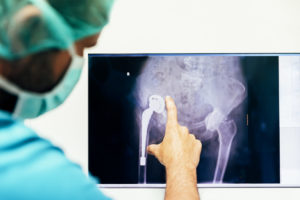
Potential Advantages of Anterior Hip Replacement
Proponents of anterior hip replacement surgery believe it offers several advantages, including:
Less damage to major muscles
The anterior approach avoids cutting major muscles. There are fewer muscles at the front of the hip, and the surgeon works between them, rather than cutting through muscle fibers or detaching muscles from bones (and then having to make repairs at the end of the surgery).
Less post-operative pain
Because the surgery does not require cutting major muscles, patients typically experience less pain after surgery and require less pain medication.
Faster recovery
Research suggests people who have anterior hip replacements stop using walkers, canes, and other assistive devices 5 to 7 days sooner than traditional hip surgery patients.
Fewer postsurgical precautions
After hip replacement surgery, patients are given a list of precautions—certain movements and activities that should be avoided in order to prevent the new hip from dislocation. (Precautions are typically followed for the first 6 weeks after surgery.)
Anterior approach surgeons tend to assign fewer or no postsurgical precautions. However, there is no clear consensus on this issue since some surgeons performing traditional hip replacement are also forgoing the post-operative hip precautions.
While anterior hip replacement may offer some advantages, there are also potential limitations or disadvantages.
